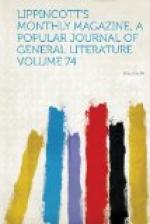[Footnote 2: The Friederichsstadt and Dorotheenstadt are those parts of the town with which the tourist is most familiar as places of residence and shopping; Coeln is the island on which stand the castle and the two museums; Old Berlin is the part beyond the Spree.]
A comparison of Berlin and Vienna in their present state will suggest many reflections. We have seen that they resemble each other in origin, rate of growth and actual size. In their composition, however, they differ widely. The population of Berlin is homogeneous, devotedly attached to the Hohenzollern dynasty, enterprising in trade and manufactures, thrifty and economical. It spends far less than it earns. For upward of half a century it has been subjected to the most careful military and scientific training. Moreover, Berlin is the geographical and political centre of a thoroughly homogeneous realm. We cannot afford to encourage any delusions on this point. It has become of late the fashion among certain French writers and their imitators to sneer at the Prussians as semi-Slaves, to call them Borussians, and contrast them with the so-called Germans proper of Bavaria, Swabia and the Rhine; whereas the fact of ethnography is that the Prussians are an amalgamation of the best—that is, the hardiest and most enterprising—elements of all the German districts. The purest blood and the most active brains of the old empire left their homes on the Main and the Weser to colonize and conquer under the leadership of the Teutonic order. The few drops of Slavic blood are nothing in comparison. Slavic names of towns and villages do not prove Slavic descent; else, by like reasoning, we should have to pronounce “France” and “French” words implying German blood, and “Normandy” an expression for Norse lineage. So far from being composite, Berlin is ultra German. It is more national, in this sense, than Dresden, where the Saxon court was for generations Polish in tastes and sympathies, and where English and American residents constitute at this day a perceptible element; more so than Bremen and Hamburg, which are entrepots for foreign commerce; more so than Frankfort, with its French affiliations. The few Polish noblemen and workmen from Posen only serve to relieve the otherwise monotonous German type of the city. The French culture assumed by Frederick the Great and his contemporaries was a mere surface varnish, a passing fashion that left the underlying structure intact. Furthermore, Berlin is profoundly Protestant. The Reformation was accepted here with enthusiasm, and its adoption was more of a folk-movement than elsewhere, Thuringia alone excepted. By virtue of its Protestantism, then, Berlin is accessible to liberal ideas and capable of placing itself in the van of progress without breaking abruptly with the past. Its liberalism, unlike that of Catholic Paris, does not lead to radicalism or communism. Finally, it is to be borne in mind that Berlin, having become the official capital, must




